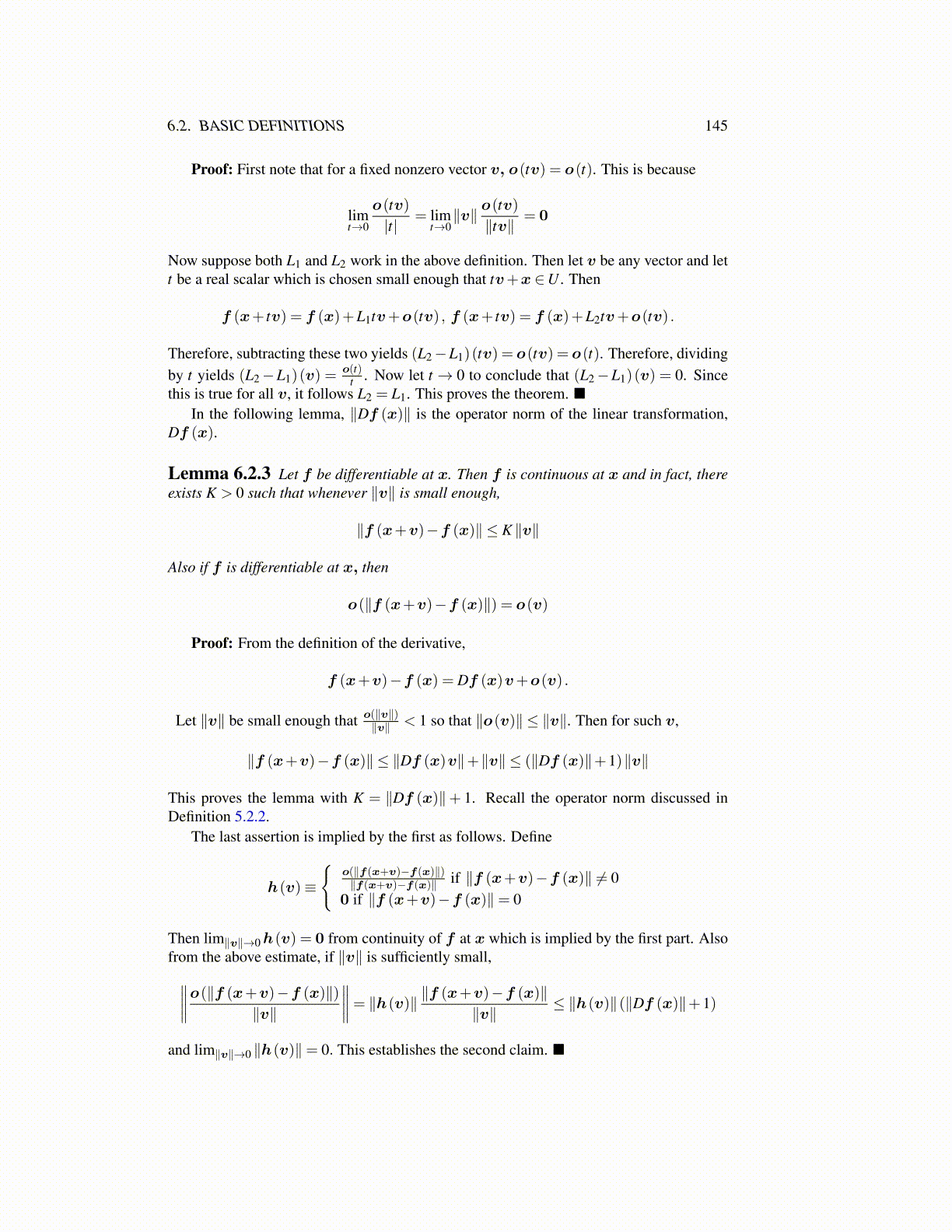
6.2. BASIC DEFINITIONS 145
Proof: First note that for a fixed nonzero vector v, o(tv) = o(t). This is because
limt→0
o(tv)|t|
= limt→0∥v∥ o(tv)∥tv∥
= 0
Now suppose both L1 and L2 work in the above definition. Then let v be any vector and lett be a real scalar which is chosen small enough that tv+x ∈U . Then
f (x+ tv) = f (x)+L1tv+o(tv) , f (x+ tv) = f (x)+L2tv+o(tv) .
Therefore, subtracting these two yields (L2−L1)(tv) = o(tv) = o(t). Therefore, dividingby t yields (L2−L1)(v) =
o(t)t . Now let t → 0 to conclude that (L2−L1)(v) = 0. Since
this is true for all v, it follows L2 = L1. This proves the theorem. ■In the following lemma, ∥Df (x)∥ is the operator norm of the linear transformation,
Df (x).
Lemma 6.2.3 Let f be differentiable at x. Then f is continuous at x and in fact, thereexists K > 0 such that whenever ∥v∥ is small enough,
∥f (x+v)−f (x)∥ ≤ K ∥v∥
Also if f is differentiable at x, then
o(∥f (x+v)−f (x)∥) = o(v)
Proof: From the definition of the derivative,
f (x+v)−f (x) = Df (x)v+o(v) .
Let ∥v∥ be small enough that o(∥v∥)∥v∥ < 1 so that ∥o(v)∥ ≤ ∥v∥. Then for such v,
∥f (x+v)−f (x)∥ ≤ ∥Df (x)v∥+∥v∥ ≤ (∥Df (x)∥+1)∥v∥
This proves the lemma with K = ∥Df (x)∥+ 1. Recall the operator norm discussed inDefinition 5.2.2.
The last assertion is implied by the first as follows. Define
h(v)≡
{o(∥f(x+v)−f(x)∥)∥f(x+v)−f(x)∥ if ∥f (x+v)−f (x)∥ ̸= 0
0 if ∥f (x+v)−f (x)∥= 0
Then lim∥v∥→0h(v) = 0 from continuity of f at x which is implied by the first part. Alsofrom the above estimate, if ∥v∥ is sufficiently small,∥∥∥∥o(∥f (x+v)−f (x)∥)
∥v∥
∥∥∥∥= ∥h(v)∥ ∥f (x+v)−f (x)∥∥v∥
≤ ∥h(v)∥(∥Df (x)∥+1)
and lim∥v∥→0 ∥h(v)∥= 0. This establishes the second claim. ■